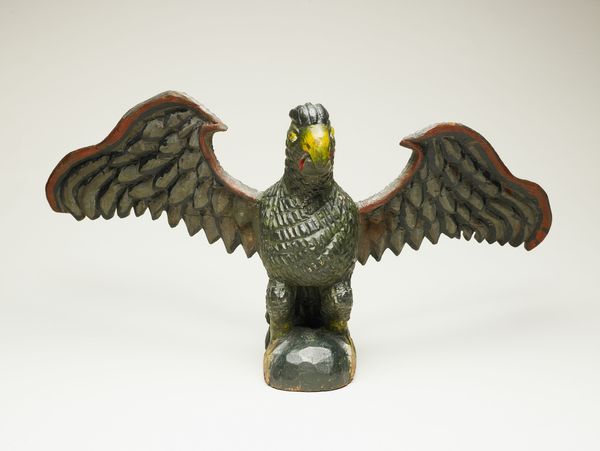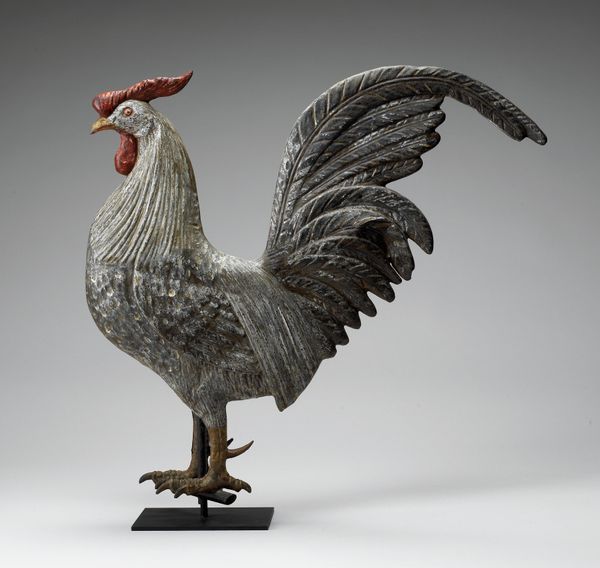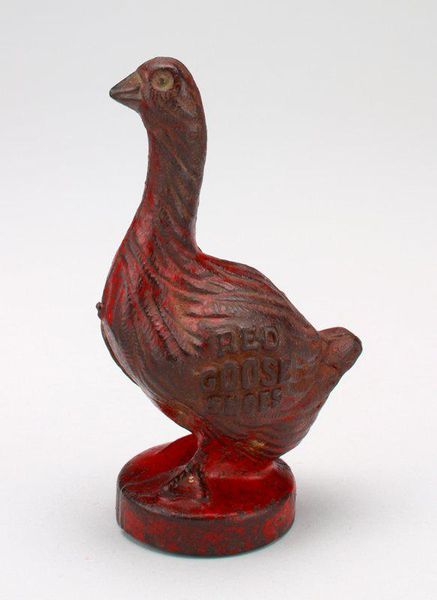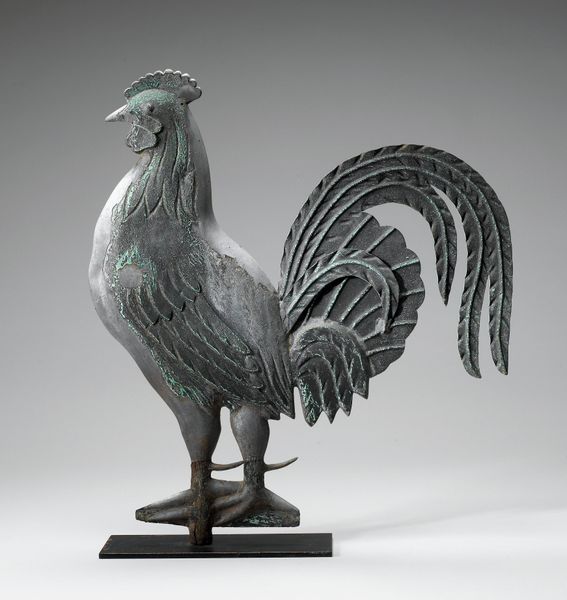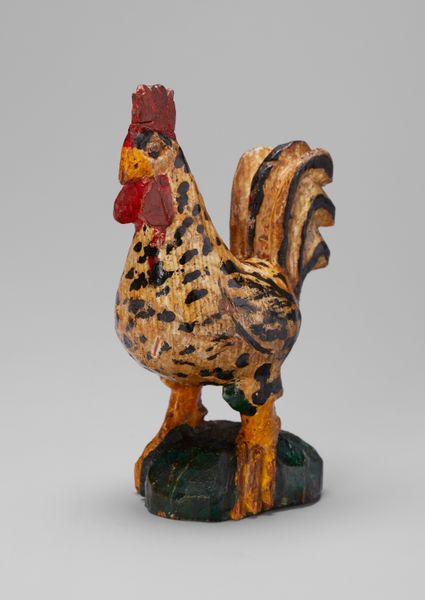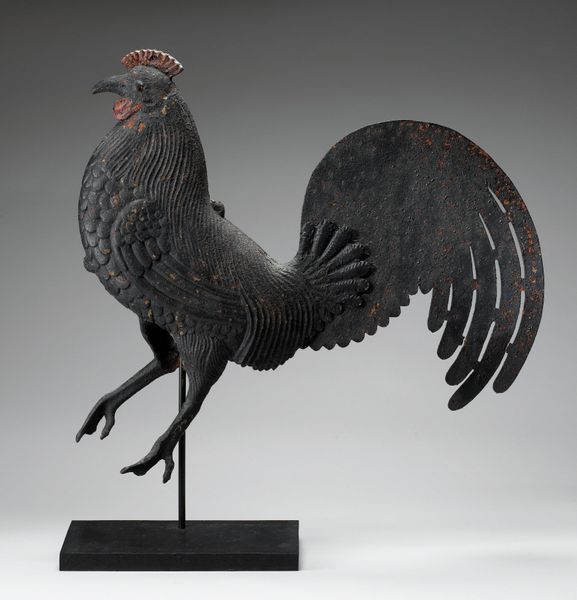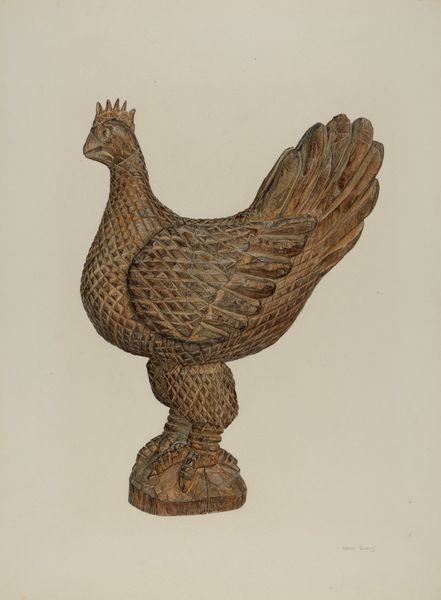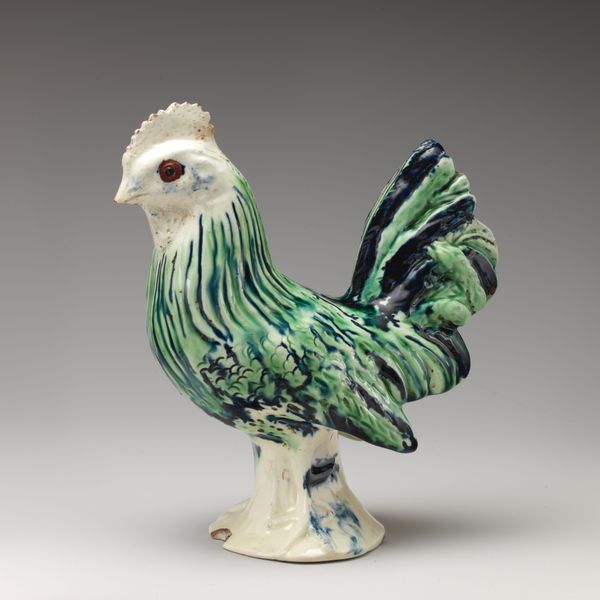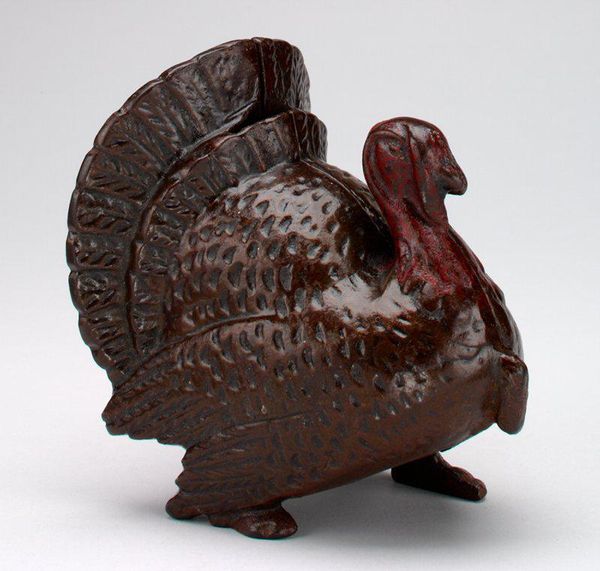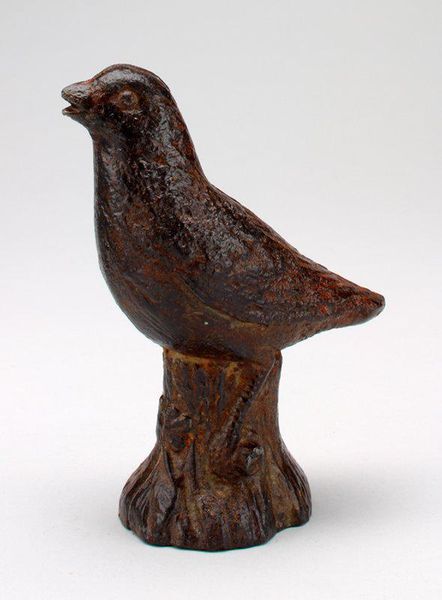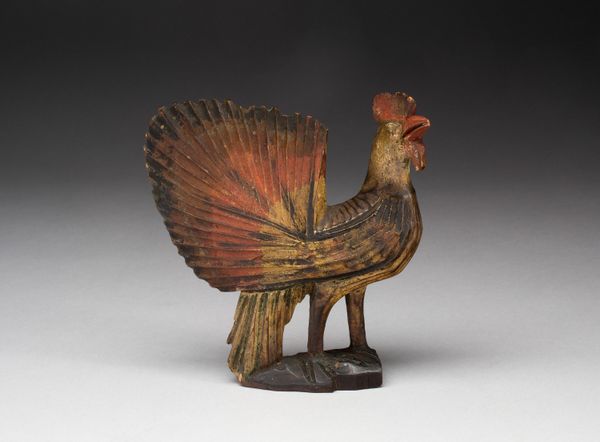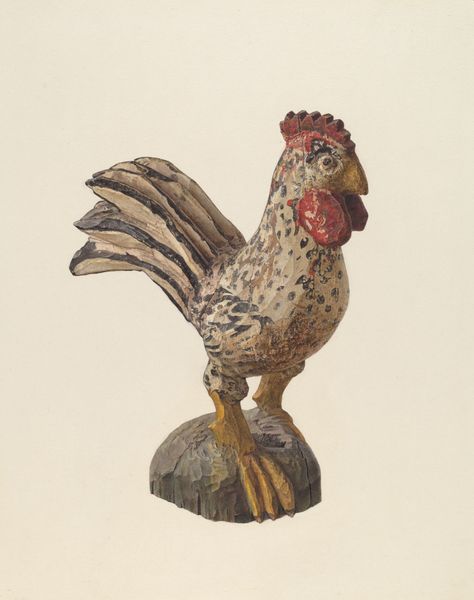
-Rooster- mechanical bank c. 1880 - 1890
0:00
0:00
pigment, metal, bronze, sculpture
#
pigment
#
metal
#
bronze
#
figuration
#
sculpture
#
decorative-art
Dimensions: 6 x 3 1/2 x 2 5/16 in. (15.24 x 8.89 x 5.87 cm)
Copyright: Public Domain
Curator: Right, let's take a look at this -Rooster- mechanical bank, likely made between 1880 and 1890. The piece, now held here at the Minneapolis Institute of Art, is attributed to Kyser & Rex Company. It's primarily constructed of metal and bronze, with the application of pigment to enhance its features. Editor: It strikes me as surprisingly imposing. Even at what must be a small scale, the rooster has a certain proud, almost aggressive stance. It's aged beautifully, giving it an unexpectedly solemn character, despite what I assume was its original playful purpose. Curator: Absolutely. Mechanical banks like these were very popular, not just as ways to encourage children to save, but as objects of amusement and demonstrations of industrial ingenuity. Their widespread popularity reflects broader trends of industrialization and the growing availability of consumer goods in the late 19th century. Editor: And the choice of a rooster is interesting. What would it have symbolized in that era? I mean, it’s still a wake-up call of sorts but I imagine deeper connotations resonated then. The red comb really emphasizes his dominant presence. Curator: Precisely! The rooster has always carried multifaceted symbolic weight. In agricultural societies, it’s deeply associated with masculinity, virility, and, crucially, the start of the day, order emerging from darkness. Think of its prevalence as a weathervane—a symbol literally placed at the apex of civic and agricultural structures. Editor: So even in something designed for children, there’s this reinforcement of societal expectations and values through symbolism? Fascinating how even a toy like this can mirror broader power structures and beliefs. Curator: Without a doubt. These objects, while ostensibly for play, functioned as socialization tools, subtly shaping children's understanding of the world. It underscores the very deliberate creation of ‘innocence’ we find in the decorative arts and toy industries that arose alongside these structures. Editor: That interplay between innocence and subtle messaging really reframes my understanding of it. It isn’t merely a decorative object but a reflection of the times. It is much more. Curator: Indeed. Examining the layers of meaning embedded within seemingly simple artifacts allows us a greater grasp of the culture that created them. I am struck by its enduring presence, even across generations.
Comments
No comments
Be the first to comment and join the conversation on the ultimate creative platform.
